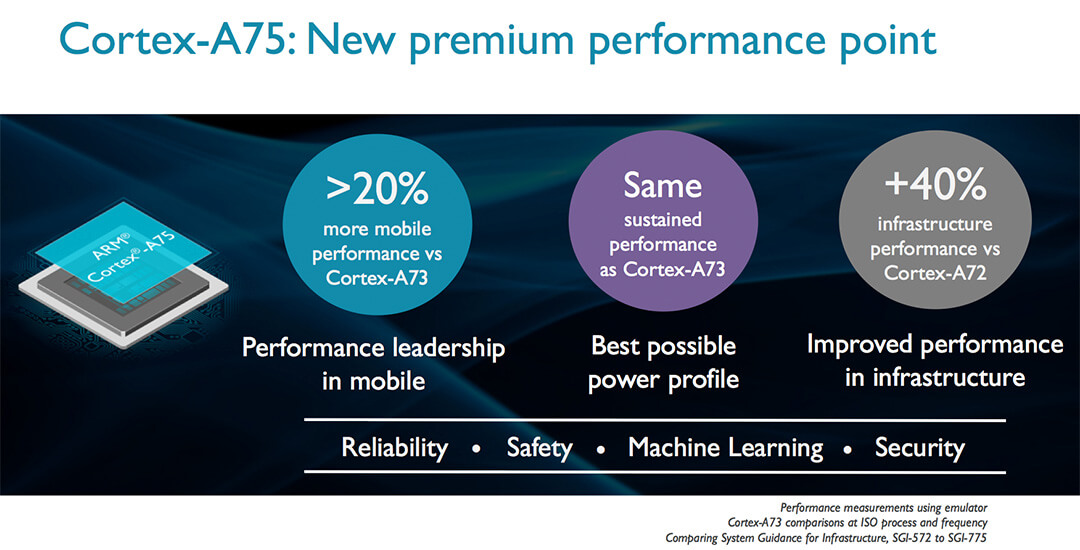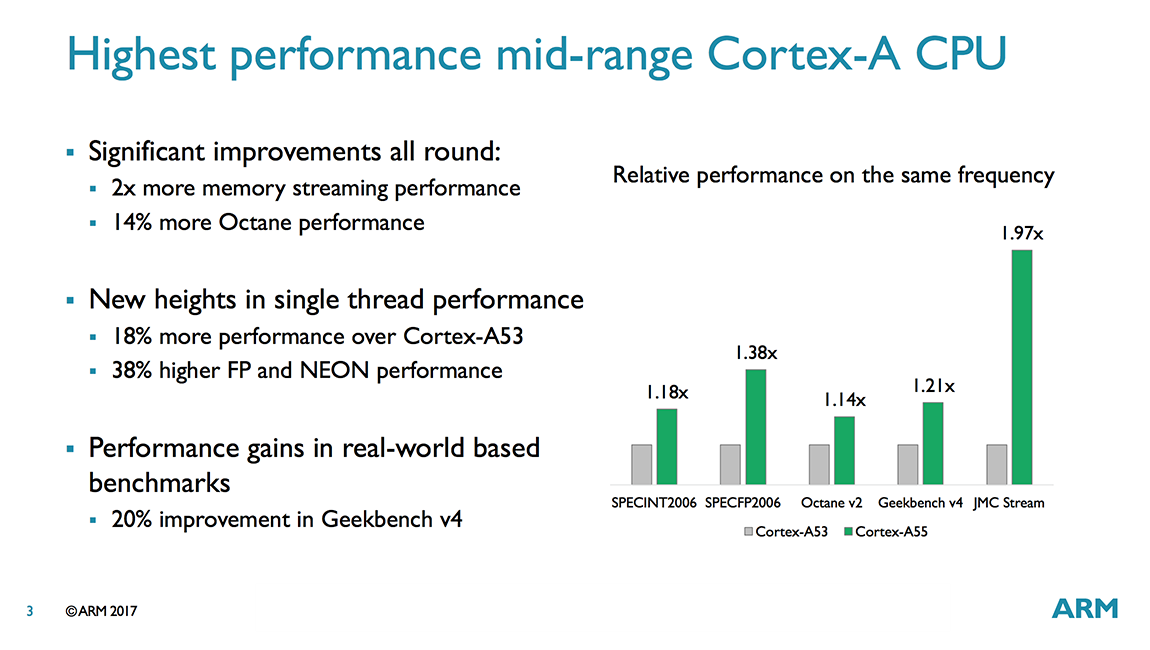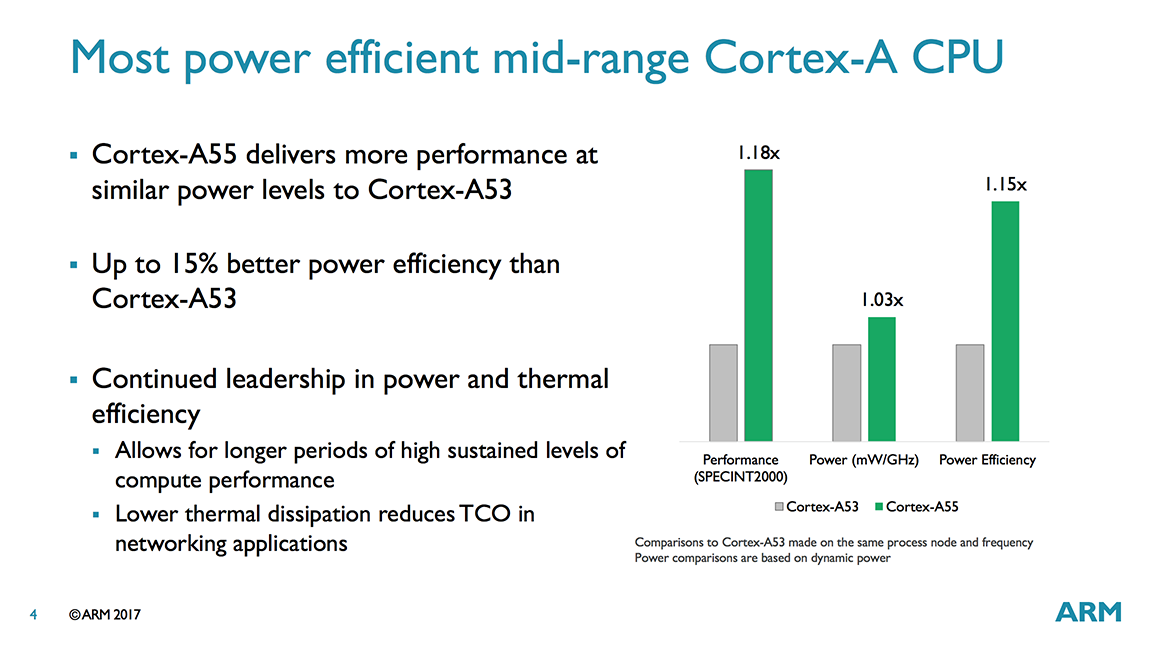
Computex 2017 may not start until tomorrow, but ARM, the UK-based company that designs the architecture for most of the world’s mobile processors, chose yesterday to reveal its latest generation of CPUs and GPUs based on its Dynamiq platform: the Cortex-A75 and Cortex-A55 processors, and the Mali-G72 graphics chip.
Back in March, ARM revealed a new technology called Dynamiq, which allows a combination of smaller, more power-efficient cores and larger, more powerful cores to be used on the same design. Previously, there needed to be an equal number of large and small cores. With a maximum of eight cores in a cluster, it’s now possible, for example, to have seven ‘Little’ A55 cores and one ‘Big’ A75. Not only does this offer more flexibility for manufacturers that use its designs, but the company says the Dynamiq family will be able to increase AI performance by more than fifty times over the next three to five years.
ARM says the “ground-breaking” Cortex-A75 boasts a 20 percent mobile performance boost over the older A73. It adds that the new processor can offer laptop-level performance while using the same amount of power as existing mobile processors. ARM sees the A75 being used in large-screen devices (laptops), servers, automobiles, and, of course, smartphones, where it will provide additional performance for advanced workloads such as machine learning. And thanks to improved instructions-per-clock efficiency, single-threaded performance is improved by around 20 percent.

The mid-range Cortex-A55 CPU, which is designed for extreme scalability and power-efficient devices, is 2.5 times more efficient than its A53 predecessor. It’s aimed at “everyday devices,” especially those where power usage is a major factor, such as wearables and Internet of Things products.


Finally, ARM revealed its Mali-G72 graphics chips, the second generation of GPUs based on its Bifrost architecture. Like the Mali-G71, it’s designed with graphically intensive mobile gaming and VR in mind. With 32 shader cores, 25 percent higher energy efficiency, and a 20 percent better performance density, ARM says it offers a 40 percent greater overall performance than devices based on previous generation Bifrost GPUs.
ARM says the first mobile devices to feature its new designs will likely arrive in the first quarter of 2018, though it admits some Chinese manufacturers could use them in their products before the end of this year.
https://www.techspot.com/news/69489-arm-new-processors-boost-future-smartphones-better-ai.html